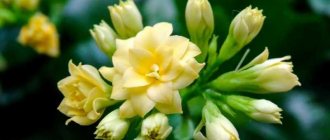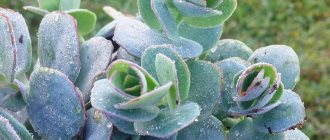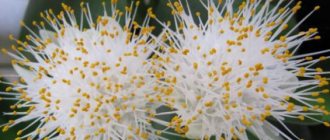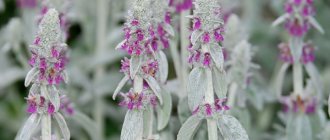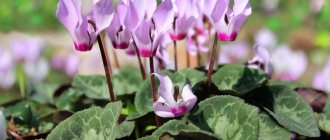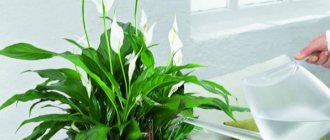About the plant
The genus Kalanchoe belongs to the Crassulaceae family, which includes more than 200 species of annual and perennial herbaceous plants. Most of them belong to succulents - plants that have special tissues for storing water and grow in dry areas. The most famous succulents include cactus and aloe.
Most species grow in tropical climates. They can be found in Africa, South America, Southeast Asia, and Australia. Some common home-grown species are native to Madagascar.
The genus name Kalanchoe is a French phonetic transcription of the Chinese "Kalan Chauhuy", which means "falling and growing" in Chinese. This name was given because of the reproduction characteristics of some plants. They are viviparous - daughter shoots are formed on the mother plant and, falling to the ground, immediately germinate, since they already have developed roots - this is clearly visible in the photo.
Kalanchoes can have a height from a few centimeters to 4 meters. Propagated by seeds, hatching buds or cuttings. It is grown as an indoor, decorative flower or medicinal plant.
Compound
Due to their rich chemical composition, some types of Kalanchoe are actively used for medicinal purposes. Healing flower contains:
- flavonoids;
- enzymes;
- vitamins;
- macro- and microelements;
- organic acids;
- essential oils;
- glycosides;
- tannins;
- lipid compounds.
The flower is used not only in alternative medicine. Currently, traditional medicine produces pharmacological agents from Kalanchoe and, at the same time, conducts active research to study the beneficial properties of the plant on human health.
Home care
Kalanchoe will not require much effort from you to grow. It can go without water for a long time and does not require maintaining a certain temperature or humidity. In addition, it is a medicinal plant. So it will help in treatment at any time.
Location and lighting
Succulents need a lot of sun. It is only advisable to catch the morning and evening sun rays, and during the daytime either remove them from the windowsill altogether or shade them. You can place a flowerpot with a flower on the east or west window. In winter you can safely place it on a south-facing window sill. If you want Kalanchoe to bloom in the cold season, you will have to supplement it with light.
Temperature
The most favorable environment for a fleshy sprout is +17-19°C. But the flower can withstand a lot of coolness. The main thing is that the thermometer reading does not fall below +5-6 degrees.
It is desirable that the daytime temperature differs from the night temperature by several degrees. This is necessary for the formation of buds and better flowering.
But it is advisable to protect your pet from the heat. If the room is more than 20 degrees, the Kalanchoe will begin to absorb more liquid, and this can lead to rotting of the roots.
Watering
You should remember the main rule - it is better to underfill than to overfill Kalanchoe. The fleshy stems accumulate moisture, so the plant can survive without water for some time. And excess liquid can lead to the death of your green friend.
In summer, water when the substrate is one third dry, and in winter by 2/3, that is, almost completely. The water should be settled and cool. Pour in enough liquid to make the soil moist but not wet. In case of accidental overflow, be sure to drain the excess from the pan.
You need to water so that moisture does not fall on the leaves.
Air humidity
Kalanchoe, which does not like water, also reacts unfavorably to high humidity. The air in the room must be dry, otherwise it will rot and die. Only occasionally should you wash off the dust from the leaves.
The soil
For Kalanchoe, a purchased substrate for cacti or succulents is suitable. You can take universal soil, enriching it with expanded clay or perlite. You can collect the soil mixture yourself. You will need to take:
- 30% turf;
- 30% leaf soil;
- 30% river sand (coarse);
- 10% vermiculite.
Feeding and fertilizers
Kalanchoe does not need frequent feeding. It is enough to apply mineral fertilizer for succulents once a month. During flowering, you can fertilize it once a week, but in small portions. In winter, fertilizing should be stopped altogether. Make sure that there is some nitrogen in the composition, otherwise the bush may rot.
Transfer
A pot for Kalanchoe needs to be deep and wide, since the root system is not inferior in growth to the above-ground part. It is best to take a clay pot. The bottom of the container should be lined a quarter of the height with expanded clay or clay shards for better drainage. The diameter of the flowerpot should be 2-3 cm larger than the previous one.
The bush will have to be replanted every year in the spring, immediately after flowering. After removing the plant from an old pot with a small amount of soil, inspect the roots and get rid of any dried or rotten parts. Move to a new place of residence. In this case, the substrate must be identical to the old one. Place the bush so that the root collar is at the level of the soil mixture. And the upper edge of the flowerpot should protrude 2-3 cm above the soil. Add as much soil as needed and water the pet. Sprinkle a layer of pebbles on top. Adaptation to changing living conditions should take place within a week.
If you need to urgently replant a Kalanchoe during flowering, use the transshipment method. To do this, water the bush thoroughly, transfer it along with the earthen lump into another pot, and fill the remaining cavities with fresh soil.
Trimming
For the beauty of the bush, regular pruning and pinching is necessary. This should be done every spring or early summer after the plant has flowered. Particularly elongated shoots should be reduced by half or even two-thirds.
Those that are too bare will look unattractive, so it is better to cut them off to the base and root the top to form a new plant.
Kinds
More than 200 different species of Kalanchoe are known. Often they also include the closely related genus “Bryophyllum”, or “Bryophyllum”, consisting of 47 species. The most common ones for growing at home are:
- Kalanchoe blossfeldian - Blossfeld. Plant up to 30 cm high. Homeland - Madagascar. A little-studied species.
- Kalanchoe daigremontiana - Degremona. Also a Madagascan species, reaching half a meter in height.
- Kalanchoe pinnata - Kalanchoe pinnata. The most studied species. Can reach 2 m in height.
All of the above types of Kalanchoe are used for medicinal purposes. Kalanchoe Kalandiv, a miniature species often called a “flower bed in a pot,” is now increasingly popular as an ornamental plant.
Which ones are healthier?
Among the common types of Kalanchoe, traditional medicine has studied well and uses only two in medical practice:
- Degremona is a culture that appears more often than others in alternative medicine recipes. Traditional doctors also do not ignore this plant. As a result of their research, it was proven that the use of Kalanchoe Degremona extract has a positive effect in the treatment of breast cancer.
- Cirrus is the most studied species of Kalanchoe by science. In traditional medicine it is used to treat infections, inflammation, rheumatism. In some countries it is used to treat hypertension and urolithiasis. The juice of the plant is also used in surgery, dentistry and obstetrics as an anti-inflammatory and wound-healing agent.
It is difficult to say unequivocally which type of Kalanchoe is most useful. However, in medicinal practice it is recommended to use plants that are better studied by science, and these include only Kalanchoe “Cirrus” and “Degremona”.
How to properly care for Kalanchoe
Kalanchoe is quite unpretentious, but does not like very hot sun; the best place for it is an eastern window, where there is sun only until lunchtime. The room needs to be ventilated often, but the plant does not like drafts.
The temperature must be kept at +20...+25°C in summer, and +15°C in winter, otherwise the Kalanchoe may die. In summer it would be good to take the plant out onto the balcony or veranda.
You should not water Kalanchoe too much; it does not tolerate waterlogging, as the roots may begin to rot. The soil should have time to dry out between waterings. In summer, you need to water once every 3-4 days; in winter, the break should be from 8 to 15 days. The water should sit for a day before watering.
The plant grows quickly, it often requires transshipment, but it is better to do this in the spring. The pot should be 3–4 cm wider than the previous one, making sure to add drainage to the bottom so that the roots do not rot. The soil is best made from a mixture of leaf and turf soil.
Kalanchoe propagates by cuttings, seeds and children.
Video:
how to care for Kalanchoe Expand
Beneficial features
All the healing power of the plant is contained in its fleshy leaves. They contain the largest amount of useful substances, thanks to which the plant has the following healing properties:
- antiseptic;
- anti-inflammatory;
- wound healing;
- immunomodulatory;
- hemostatic;
- antiviral;
- hypotensive – lowering blood pressure;
- sedative;
- painkillers.
Also, the beneficial properties of Kalanchoe have found their application in detoxifying the body - removing toxins (the plant has a mild diuretic and choleretic effect).
Can Kalanchoe leaves be eaten fresh?
At first, people noticed the medicinal abilities of Kalanchoe and only then decided to try to use it for culinary purposes. The plant is rich in vitamins and minerals, so dishes made from it are really healthy, but since its leaves have a sharp, bitter taste, they are not widely used. Such dishes are more suitable for those who are interested in therapeutic nutrition, since they help restore the body after surgery or a debilitating illness, help cleanse the blood, protect against colds, and remove harmful substances.
Cucumber best reduces the astringency and bitterness of Kalanchoe, so in combination with it the medicinal plant is quite possible in a salad.
A good combination of Kalanchoe with carrots or avocado, green salad, fresh peas in olive oil dressing with lemon juice.
You can try making a vinaigrette with Kalanchoe. For it, as usual for such a dish, you will need to boil 3 potatoes, one beet and one carrot. Peel and chop the vegetables, add 2 chopped pickles and a handful of sauerkraut. Also chop pickled champignons (40 g), Kalanchoe leaves (30–40 g), and green onions. Salt, pour in sunflower oil - preferably unrefined, with the smell of seeds.
What does it help with?
The plant is used to treat a number of diseases. It is recommended to use the plant for the treatment of the following pathologies:
- skin diseases: wounds, abrasions, burns, frostbite, polyps - polyposis, warts, ulcers, bedsores, trophic ulcers;
- oral diseases: stomatitis, bleeding gums, gingivitis, toothache and sore throat;
- colds: acute respiratory viral infections, acute respiratory infections, runny nose, cough, otitis media, rhinitis, sinusitis;
- joint diseases;
- blurred vision;
- varicose veins or varicose veins;
- hemorrhoids;
- gastrointestinal pathologies: peptic ulcer, stomach and intestinal disorders.
The plant can also be used in cosmetology to improve the condition of skin and hair.
Indications for use
It is the rich composition that determines the medicinal properties of Kalanchoe. The plant can be safely classified as a natural “doping”, because its biologically active components strengthen the body’s resistance to negative external factors and stimulate the immune system. The following medicinal properties of the Kalanchoe flower are distinguished:
- blood purification;
- elimination of inflammation;
- stimulation of immunity;
- getting rid of bacteria;
- removal of toxins;
- tissue regeneration and wound healing;
- pain relief.
It is for the antibacterial properties and the ability of the plant to restore the body that Kalanchoe is popularly nicknamed “homemade ginseng.” The plant is used for local therapy, but it can also be consumed orally. Kalanchoe can fight a wide variety of ailments. Doctors give the following indications for use:
The type species of the genus Kalanchoe is Kalanchoe laciniata. Botanical illustration from Francisco Manuel Blanco's Flora de Filipinas, 1880-1883.
- colds;
- conjunctivitis;
- gingivitis, stomatitis, periodontal disease;
- tonsillitis, tonsillitis, adenoids, otitis, runny nose, cough;
- tuberculosis;
- pustular inflammation, acne;
- varicose veins;
- joint pathologies;
- ulcers, gastritis;
- prostatitis, adenoma;
- mastitis, erosion;
- eczema, psoriasis, erysipelas;
- cuts, skin ulcers, burns, necrosis.
Despite the impressive list of beneficial properties, the use of Kalanchoe is allowed only after consultation with the attending physician. Otherwise, the medicinal crop can cause serious harm.
Recipes
Alternative medicine knows many recipes for cooking from Kalanchoe. The plant can be consumed fresh, but can also be used to make medicinal products in the form of juice, tinctures and infusions.
Juicing
For preparation, it is recommended to first place the collected leaves in the refrigerator for one week to soften. This makes it easier to extract juice from plant materials.
After the leaves have become softer, they should be crushed in any convenient way: crush in a mortar, grind in a meat grinder. The juice is squeezed out from the resulting mixture using gauze. Store the finished product in the refrigerator for no more than 2 weeks. Therefore, it is not recommended to prepare the mixture in large quantities.
For long-term storage, the juice is mixed with medical alcohol:
- 1 part – alcohol;
- 5 parts – juice.
In this form, the juice can be stored for about a year without losing its beneficial properties. To maintain immunity and treat diseases of the gastrointestinal tract, it is recommended to take 1 tsp. product, during meals, three times a day. You can add honey to improve the taste. The course of treatment is 2 weeks, then you should take a break for the same period.
Vodka tincture
The use of Kalanchoe tincture with vodka has contraindications due to its alcohol content. However, it is one of the effective remedies recommended for treating acne and treating wounds. When treating wounds or ulcers, the product is applied to the affected area using a cotton swab.
Flower meaning
The name Kalanchoe literally translates from Chinese as “what falls, grows.” It is also called the “tree of life”, “room doctor”, “homemade ginseng” due to its high content of nutrients, vitamins, trace elements and minerals.
Kalanchoe is unpretentious, consumes little water, and can grow in any conditions. Therefore, “Kalanchoe” means endurance, durability and strength. It is given to purposeful and persistent people who achieve success in any business.
In China, it is customary to give Kalanchoe in pots as gifts for Chinese New Year. This means that you wish the person prosperity, well-being and wealth.
According to signs, Kalanchoe absorbs negative energy and protects the family from gossip, quarrels and evil spirits. It charges the home atmosphere with calm, harmony, and comfort.
It is recommended to keep the flower in places where household members spend more time together.
Cut flowers mean affection. In a bouquet, their meaning depends on the color:
- Reds represent love, a strong and strong feeling;
- White and pink - innocence, sympathy, romance;
- Yellow and orange represent good humor and friendship;
- Purple and blue - quite rare - are universal. Using them in a wedding composition, they can highlight the color of the bride’s dress. They can be given as a compliment on the first date.
Contraindications
Despite all the benefits of the flower, the use of Kalanchoe for medicinal purposes has limitations. If it is practically safe as an external agent, then ingestion can be harmful. It is not recommended to use the plant for:
- presence of allergies;
- pregnancy;
- breastfeeding;
- individual intolerance;
- hypotension – low blood pressure;
- chronic liver and kidney diseases.
Blooming Kalanchoe will not only disinfect the air in the room and create a cozy atmosphere in the house, but will also help cure many diseases. However, like any folk remedy, the advisability of its use should be discussed with your doctor.
Superstitions for women
The presence of Kalanchoe in the house promises happiness for women. It has a beneficial effect on the nervous system, general health, and reproductive organs.
- For an unmarried girl, the plant predicts a meeting with a worthy life partner. It will protect her from gossip and unwanted suitors;
- Soon she will have a marriage proposal and the birth of a child;
- For a married woman, it promises protection of the family hearth and preservation of the marriage for many years;
- For a family that has lived together for a long time, the plant will help bring back lost passion and strengthen their union.
The plant gives a good mood and brings harmony to the family. It can become a reliable talisman for all family members.
A plant in the house affects not only a good mood, but also the energy of the room as a whole.
Diseases and pests: treatment methods
Kalanchoe Degremona is rarely infested with pests. But if this happens, then most often it is:
- aphid;
- scale insect;
- spider mite
Curling leaves, lots of small green insects, and a sticky coating on the stems and leaves of the plant are signs of aphid . Spraying with insecticides will help get rid of the parasite.
The scale insect feeds on the sap of the plant. It has a durable waxy shell, due to which insecticides have virtually no effect on the parasite. Therefore, it is necessary to manually remove pests with a cotton swab soaked in alcohol. And only after that use an insecticide to spray the flower. It is better to replace the soil in the pot with fresh soil.
Spider mites appear as yellow spots on leaves. A thin web will be visible on the back of the leaves. In this case, insecticides will also help.
If the plant is slightly damaged by pests, a single application of the insecticide is sufficient. If there is an abundant spread of parasites, then three times treatment with the drug may be required.
In addition to pests, Kalanchoe can be damaged by mold (gray rot) . This is facilitated by a too humid habitat (excessive spraying, watering) in combination with stagnant air. The leaves and stems become covered with weeping spots and a dark coating. Treatment in this case is carried out with the help of fungicides, which are sprayed both on the plant itself and on the soil in the pot. The plant may need to be replanted to remove damaged fragments of the root system.

